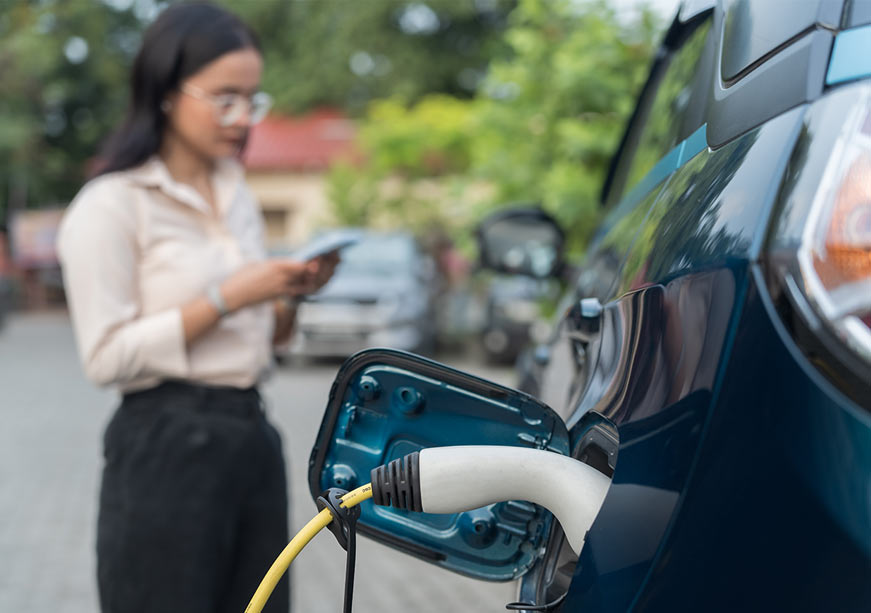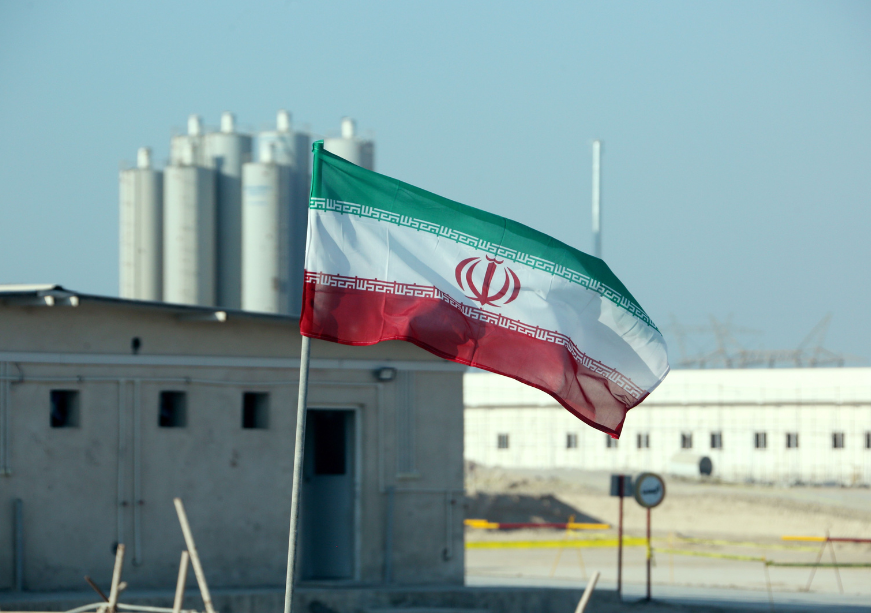EVs in Emerging Markets
While electric vehicle (EV) sales in China, Europe, and the United States (US) get much of the attention, the road to growth, profitability, and long-term market dominance lies in emerging markets. Companies such as Tata Motors and VinFast have shown that domestic manufacturers in emerging markets can compete with legacy automakers. Even though EV manufacturers in emerging economies face significant headwinds, they still have a few market advantages.
In most emerging markets, domestic private sector appetite for EVs remains low, with the exception of bus and two-wheeler segments. What’s needed is significant government investment for electricity and charging infrastructure, and subsidised vehicle costs for consumers. Since there is limited access to specialised labour for design and engineering that’s necessary for companies in the EV supply chain, this sector requires either retraining of existing workers or the import of skilled labourers.
Many of the raw materials and minerals needed for the EV supply chain, such as nickel, are located in emerging markets. This creates an incentive for international original equipment manufacturers (OEMs) to co-locate their manufacturing hubs in these markets to secure mineral rights and price stability for their battery and vehicle part supply chains. Existing mining, auto manufacturing and export infrastructure creates opportunities for joint ventures, enabling international OEMs to enter emerging markets through foreign direct investments. Each country faces distinct transportation challenges and the initial EVs adopted may be very different from those sold in China, Europe and the US. Two and three-wheelers, taxis, ride share, public transit and delivery vehicles may be the initial categories of EVs sold in a given market and could have significantly different drive cycles compared to Chinese, American and European models.
Each country faces distinct transportation challenges and the initial EVs adopted may be very different from those sold in China, Europe and the US
For countries with significant auto export markets such as Mexico, Thailand, the Philippines, Indonesia and South Africa, it is critical for governments to get the correct EV incentives in place now. This is to ensure that their homegrown automakers don’t lose the domestic market share to international OEMs and remain competitive against other auto exporters. For example, the governments of South Africa and Indonesia face significant pressure from private sector automakers to have a long-term, consistent policy framework for electric mobility incentives to reduce risk to long-term EV manufacturing investments.
Recent Developments
The current US administration has intensified its attacks on electric mobility, including removing its domestic EV tax incentives, canceling clean energy and battery R&D grants, and attacking decarbonisation efforts in international shipping. Even this antagonism towards EVs will not stop American OEMs from investing in production to remain competitive on the global market.
Meanwhile, EV sales will overtake traditional internal combustion engine (ICE) vehicle sales in China this year. Intense competition among Chinese automakers is driving down vehicle cost and spurring innovation to the point where there is a robust debate about whether BYD or Tesla are producing the best-in-class electric/autonomous vehicles.
Despite EV sales slowing in the US in 2025, they remain robust globally even as cost declines slow. Chinese EV models are reaching cost parity in a multitude of countries (IEA). This is likely to force protectionist import duties in emerging economies with robust domestic auto manufacturing sectors — and force OEMs globally to continue their transitional investments to increase their EV manufacturing capacity, especially for automakers that have significant exposure to European markets as they comply with the CBAM’s (Carbon Border Adjustment Mechanism) implementation in 2026 and the phaseout of CO2-emitting cars in 2035.
The current US administration has intensified its attacks on electric mobility, including removing its domestic EV tax incentives, canceling clean energy and battery R&D grants, and attacking decarbonisation efforts in international shipping.
While EV sales in emerging markets remain low, there has been a rapid expansion of electric two-and three-wheelers. As regional battery and vehicle manufacturing capacity increases to meet this demand, there remains a pathway for domestic EV manufacturers in emerging markets to remain competitive — especially if they can fill vehicle segments (such as Buses and two-wheelers) that have unique regional requirements which international automakers may have difficulty adapting to.
Recommendations
There are a variety of information gaps that need to be filled to de-risk EV investments for the private sector and multilateral development banks. International donors and other public sector actors should consider investing in technical assistance that addresses questions that are critical for EV deployment, such as those around battery reuse/circularity, land requirements and ownership models for charging infrastructure, and travel/trip data heuristics.
Protectionism in the form of tariffs and local content requirements only work if there are sufficient national incentives to spur domestic manufacturing, and infrastructure and supply chain development. Policymakers must provide incentives along the EV ecosystem in order to attract foreign direct investment from the private sector (e.g. automakers, charge point operators, fleet managers, etc.).
The following are recommendations for policymakers in emerging markets looking to spur EV development and deployment:
1. Catalytic Public Sector Investment
- Most countries seek private sector investment and partnerships with large OEMs and other companies with significant R&D advantage to EV development. India’s FAME scheme provides a great example of how to align supply-side and demand-side incentives with domestic private sector needs to drive the scale and purchasing power necessary to achieve domestically manufactured, cost-competitive EV models. However, most countries do not have sufficient market size to achieve economies of scale needed to drive down costs of domestically-manufactured EVs without a significant export market.
- It is also true that domestic EV manufacturing will not be profitable if solely dependent on exports (due to both competition from international automakers and increased transport/supply chain costs). If a national government doesn’t invest enough in local infrastructure and incentives to grow domestic consumer demand for EVs, then OEMs will have difficulty making the case for EV manufacturing domestically (typically needing at least 20% of domestically-manufactured EVs to be purchased in-country). Thailand provides an example of national domestic production incentives needing to be altered due to limited domestic consumption of EVs and competition from imports.
- National policymakers need to have consistent communication with international and domestic private sector automakers. For example, industry associations (such as NAAMSA in South Africa) can play a key role in making sure incentives and regulation are consistent with attracting private sector investment. Governments should also consult with charge point operators, fleet managers (ride share/delivery companies) and utility companies to determine how to de-risk their local investment.
2. Utility Reform
- Speaking of utilities, the biggest threat to domestic EV deployment is not critical mineral shortages, Chinese imports or lack of tax incentives. It’s that utilities and regulators are underprepared for the infrastructure needed to be built to meet EV demands in the next 5-10 years. Especially with load growth due to data centres and electrification, it is critical for utilities to know where infrastructure will need to be upgraded to account for EV charging demand (RMI). A lack of integration between utility and transportation planning means that transmission/distribution infrastructure upgrades are likely to be reactive rather than proactive. Utilities that could potentially reap huge revenues from the EV transition need to plan smartly and set rational tariffs so that they are not forced to overbuild infrastructure upgrades.
- Governments/regulators can serve multiple roles in addition to setting tariffs for EV charging. This includes but is not limited to:
-
-
- Utility Planning for transmission and distribution equipment upgrade for EV deployment. For example, Indonesian utility PLN is working with government ministries, charge point operators and automakers to help achieve targets of 13 million electric two-wheelers and two million electric four-wheelers on the road by 2030.
- Public-Private Ownership models for charge point operators, especially where land is scarce or the legal framework for leasing charging stations is nascent.
- Setting grid code and charging standards for EV supply equipment that do not advantage incumbent EV automakers and enable competition among charge point operators. Regulators in Mexico have recently been trying to find this balance.
-
3. Supply Chain Security
- Foreign governments have spent much of the past five years securing mineral rights for critical mineral deposits and OEMs have looked to secure long-term contracts with mining companies to provide cost certainty for nickel, lithium and other battery materials. Countries with critical mineral deposits should be wary of lax enforcement of environmental and social safeguards that could risk international private sector and donor investments (Indonesia and Philippines,for example). Maintaining international standards (such as the IFC Performance Standard) can reduce foreign investment risks. If possible, it is important for supply chain transparency to help downstream manufacturers in meeting Europe’s CBAM requirements.
- Countries seeking to benefit from the EV transition and utilise it to grow domestic manufacturing need to have a robust workforce development plan. This is so that they can convince private sector FDI that there is a competitive advantage to locating in the country due to quality of engineering/design labour (e.g. Vietnam) and a confluence of domestic talent and academic/training institutions to upskill the automotive workforce, localised parts manufacturers, and logistics/supply chain infrastructure to optimise production.
EV adoption in emerging economies remains unaffordable to many consumers. With the global EV market facing significant headwinds amidst policy and incentive uncertainty, private sector automakers will continue to make investments due to supply chain concerns, long-term manufacturing time horizons, and competition with Chinese automakers. It is critical for policymakers to promulgate consistent regulatory and incentive schemes to build capacity across local utility, manufacturing, and critical minerals industries that drive domestic EV manufacturing and consumption of electric models. Smart public investments now can build the enabling environment for long-term EV market growth and capital investment from international automakers, charge point operators, and private fleet managers. Policymakers that invest now can build resilience into their domestic auto manufacturing sector, while also guarding against a future EV supply chain that looks like the current reality of solar PV manufacturing.
Andrew Fang is a former Deputy Director of the Energy Division at USAID.












